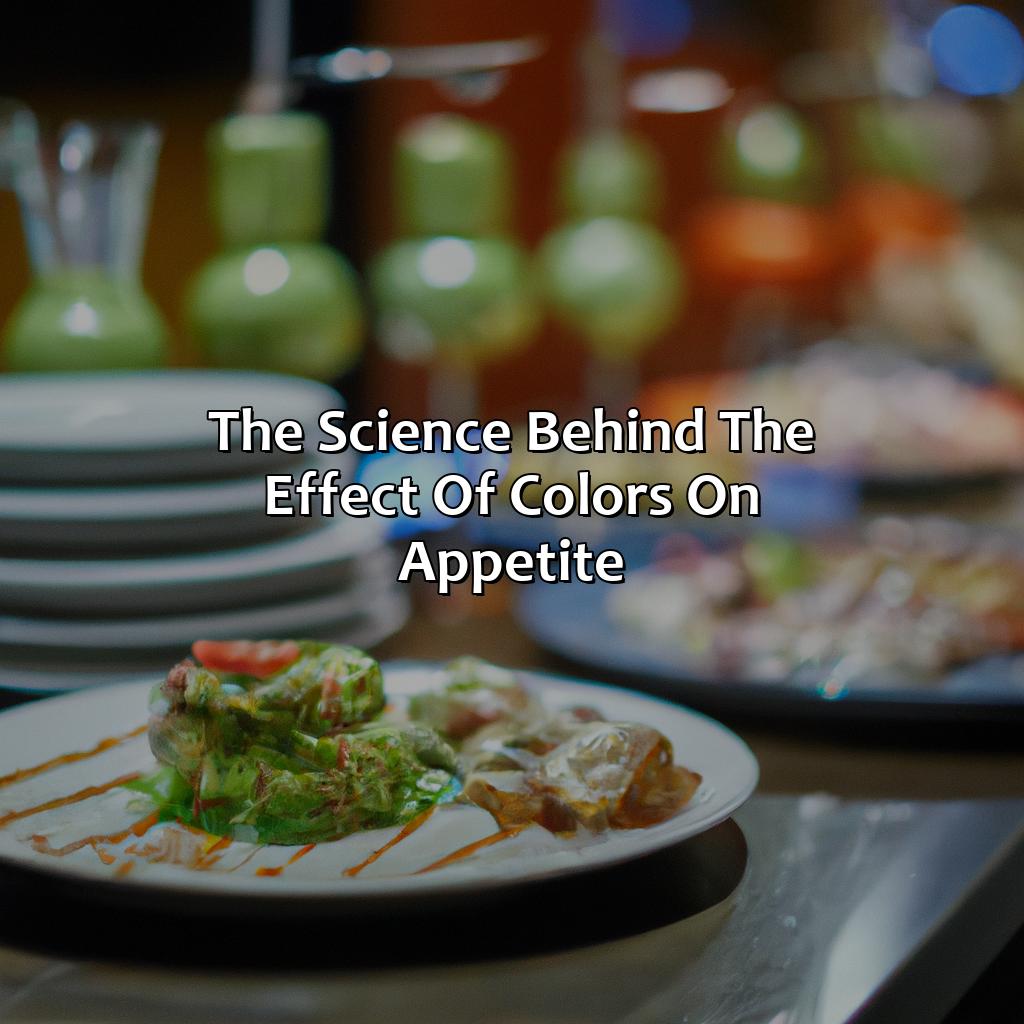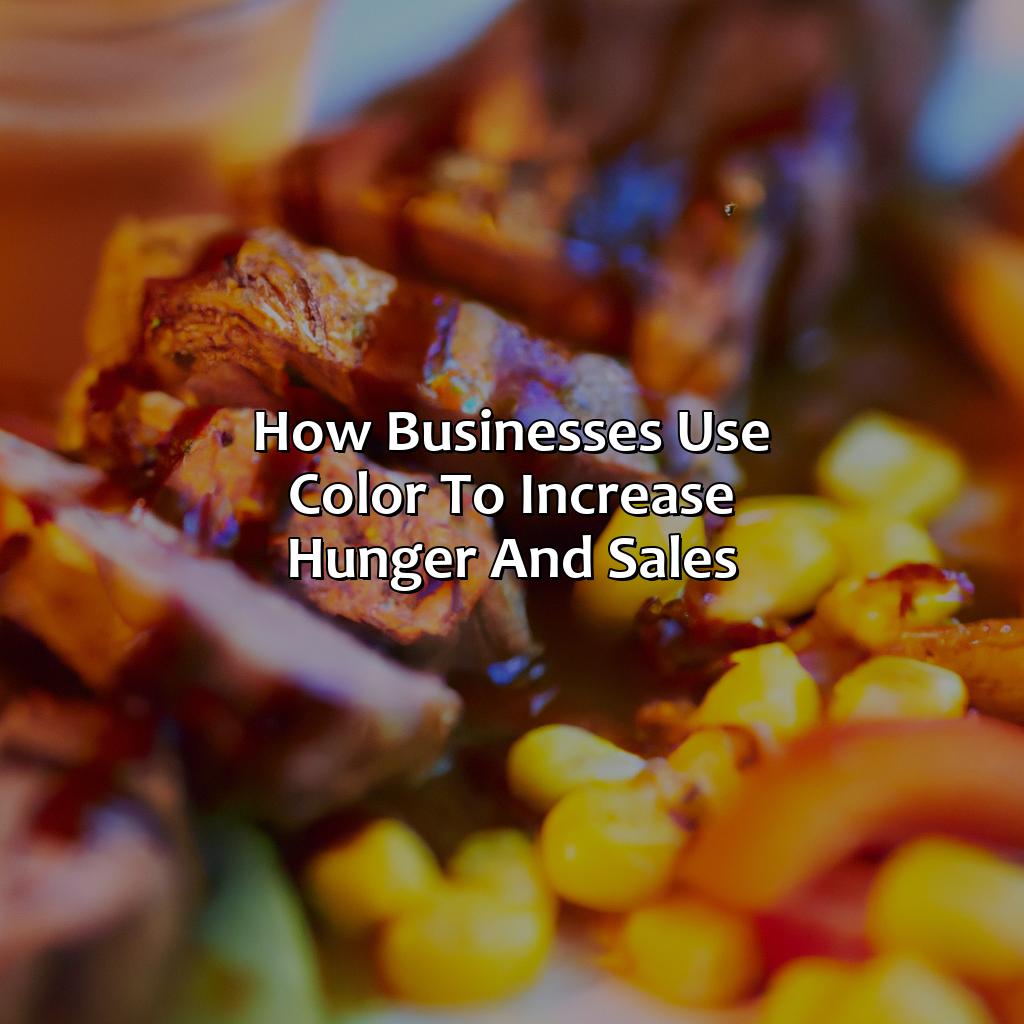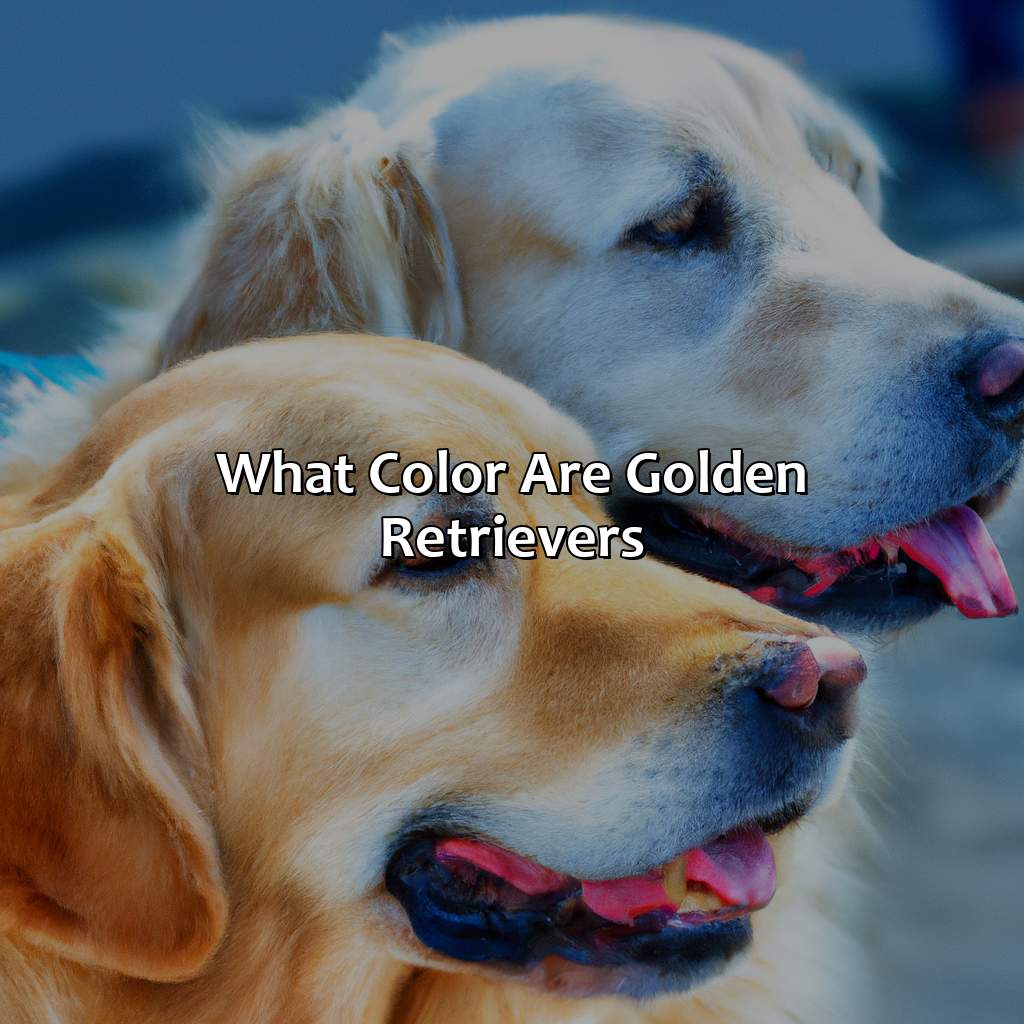Key takeaway:
- Choosing the right color can induce hunger: Warm colors such as red, orange, and yellow are known to stimulate appetite and increase food cravings due to their association with food culture, physiological and emotional response, and color psychology.
- The science behind the effect of colors on appetite: Research shows that colors can influence brain function, trigger emotional response, and stimulate visual and sensory perception that affect our eating behavior.
- Businesses use color to increase hunger and sales: Restaurants, fast food chains, grocery stores, and supermarkets use color in their branding, marketing, and food presentation to appeal to consumers’ appetite, enhance visual appeal, and increase sales.
Colors that make people hungry

Photo Credits: http:brandingmates.com by Donald Rivera
Pay attention to the colors around your food! The psychology of eating reveals the power of color attraction and appetite stimulation. Let’s explore the warm colors that make us hungry. Red, orange, yellow, and brown. We’ll see how color psychology is connected to food culture, aesthetics, advertising, and safety.
Red
The Impact of the Color Red on Appetite
Red is a color that has been shown to induce hunger through its physiological response. Studies have found that exposure to red increases levels of hunger hormones, making people crave food more. In food culture, red is associated with bold flavors such as spicy or meaty dishes. The color also represents passion, excitement, and indulgence.
Color and culture play a significant role in determining the associations we make with different hues. For example, in China and other Asian cultures, red is considered lucky and represents good fortune. In Western cultures, it can represent love, courage, and danger.
When choosing a color palette for food aesthetics or restaurant design, it’s essential to consider the principles of color theory and use colors that complement one another for maximum impact. Color schemes such as complementary colors (red-green) or triadic colors (red-blue-yellow) can create an excellent color contrast that draws attention to food presentation.
Color psychology plays a crucial role in marketing and branding strategy for restaurants and fast-food chains. Neuromarketing studies have found that consumers are more likely to purchase items from brightly colored advertisements than ones with dull-colored text.
A true story in this regard explains how ketchup was initially launched in clear glass bottles which failed miserably because the customers did not find the product appealing. Later on, they changed their packaging into opaque red plastic containers which immediately attracted customers towards it.
Overall, careful consideration should be given when selecting colors for food items, presentation style, packaging design, and logo design. The right combination of hues can significantly influence a consumer’s purchasing behavior.
Orange you hungry? The warm and visually stimulating color is a popular choice in restaurant decor for its ability to increase appetite and food appeal.
Orange
One of the appetite-inducing colors is orange. This warm color is known for its ability to increase visual stimulation and generate excitement. In restaurant decor, orange is often used as a complementary color to enhance the overall ambiance and create an inviting atmosphere. When it comes to a color preference, studies show that people tend to find orange less appealing than other warm colors like red or yellow. However, the color symbolism and psychological response toward it may affect food choices and increase food appeal. Moreover, combining orange with other appropriate colors can create a visually appealing display that complements the appetite-inducing effect of this unique color. For restaurants and food businesses, using orange strategically in branding and marketing can help attract more customers and boost sales.
Yellow stimulates the senses, evokes warmth and happiness, and is a popular choice in food marketing to increase appetite – but don’t blame the color for your love for cheese fries.
Yellow
The color yellow is often associated with warmth, happiness, and positivity. In food marketing, yellow is used to stimulate appetite as it triggers a physiological response in the brain. Color psychology suggests that warm colors like yellow create emotions of excitement and optimism, which can increase hunger levels.
Sensory stimulation also plays a role in the effect of yellow on appetite stimulation. The vibrancy and brightness of yellow draw attention to food products and enhance their visual appeal. This makes yellow an effective color choice for packaging design and in-store displays.
Interestingly, color association also affects the impact of yellow on human behavior. For example, in cultures where bananas are a common food item, the color yellow may have a stronger association with satiety than stimulation. On the other hand, in cultures where fried foods are popular, the association between yellow and hunger might be stronger.
As per a study conducted by University of Rochester researchers Andrew Elliot and Henk Aarts in 2011 titled “The Influence of Color Meaningfulness on Consumer Attitudes and Buying Intentions”, it was found that when people see different shades from different colors they generally feel warm but only when they really care about what they are seeing and its relevance to them or what they are doing.
Understanding the psychology of eating can help businesses make informed decisions about their branding and marketing strategies. By utilizing warm colors like yellow strategically, businesses can increase consumer engagement with their products and ultimately drive sales.
Brown, the color that makes you feel like you’re eating straight from the earth, perfect for rustic and organic food presentations and menu designs.
Brown
Earthy Tones in food presentation and menu design
Brown is a neutral earthy tone that elicits a natural, rustic and organic feel. The color brown is not commonly associated with appetite or hunger; however, it plays a significant role in the food industry in terms of food presentation and menu design. The use of brown color in food packaging, advertising and restaurant decor conveys warmth, comfort, and simplicity, producing a sense of calmness and relaxation.
Restaurants utilize this color because it showcases reliability and dependability when used moderately. Pairing brown with vibrant colors such as greens makes them appear fresh, crisp, healthy which attracts consumers at salad bars section of restaurants. This particular shade gives off an impression of reassurance because of its association with wholesomeness.
Color psychology has found that people relate certain colors to preferences in the foods they consume. An example would be that consumers may prefer more reddish hues in meats while expecting browner tones for baked goods like pastries and bread.
Businesses that focus on preparing dishes with organic ingredients use brown as their brand color to communicate their dedication to using farm-to-table produce. Integrating lighter shades into the website’s visual design or generic online marketing approach provides an added impact on connecting the brand message even further.
Colors not only stimulate our eyes, they also trigger our brain and affect our appetite – the power of visual persuasion is truly delicious.
The science behind the effect of colors on appetite

Photo Credits: http:brandingmates.com by Michael Martin
Unravel the effect of colors on appetite. Examine the link between color and brain function. Look at brain response, visual stimulation, and physiological response. Then, delve into the psychological bond between color and food. Analyze color psychology, food association, color preference, cultural associations, color symbolism, and emotional eating.
The relationship between color and brain function
Color is known to have a significant impact on human behavior, including our food choices. The relationship between color and brain function has been heavily researched, revealing that different colors can evoke different brain responses. Visual stimulation from certain colors can trigger physiological responses like appetite and salivation. This relationship can be attributed to our evolutionary past as humans relied on color to identify ripe fruits which signaled availability of food. Color also plays a role in psychological association with food, where certain colors are associated with specific flavors or cuisines. Understanding this neuroscientific phenomenon requires further investigation into our sensory processing mechanisms.
Research has shown that color affects the way we perceive taste and the amount we eat. Red, orange, yellow, and brown are often associated with hunger as they increase heart rate, blood pressure, and stimulate the nervous system; contributing to increased appetite and cravings. Naturally occurring bright colors such as green tend not to cause an increase in appetite due to the association they carry with fresh produce.
Pro Tip: Colors play a crucial part in enhancing customer experience for food businesses. Thus choosing appropriate color schemes through rigorous research is key for businesses aiming at increasing sales by attracting customers to their establishment or product range. When it comes to food, the colors we prefer are often rooted in cultural associations and subconscious emotions.
The psychological association between color and food
Color psychology plays a significant role in the food association of individuals. Research shows that color preference varies among cultures, and colors can hold different symbolic meanings, influencing behavior and decisions. The psychological association between color and food involves the influence of color symbolism and cultural associations on emotional eating behaviors.
The following table depicts how specific colors impact appetite:
| Color | Appetite Influence |
|---|---|
| Red | Increases appetite |
| Orange | Stimulates hunger |
| Yellow | Boosts metabolism |
| Brown | Promotes comfort |
Color symbolism can also influence human behavior when it comes to food. For example, in Western culture, green is associated with health, leading to a higher propensity to choose healthy foods in green packaging.
Furthermore, emotional eating is often driven by an individual’s relationship with food and feelings of comfort or discomfort. Colors such as blue may have a calming effect on emotions, reducing the likelihood of emotional eating.
A study conducted by a popular fast-food chain found that red and yellow were highly correlated with food sales because of their ability to stimulate appetite. In another instance, a grocery store increased wine sales after changing its interior design incorporating shades of burgundy and other autumnal tones.
Food marketing and inducing hunger have never been more colorful, as the restaurant, fast food, grocery store, and supermarket industries harness the power of colors to increase sales and influence consumer behavior.
How businesses use color to increase hunger and sales

Photo Credits: http:brandingmates.com by Steven Baker
Businesses use color to up hunger and sales in the food industry. The restaurant and fast food realm look to restaurant decor, food presentation, menu design, visual appeal and branding. While grocery stores and supermarkets, they use food packaging, color blocking, neuromarketing and advertising. Let’s explore how color can be used in food marketing! It can induce hunger and influence shoppers in these two industries.
Restaurant and fast food industry
The impact of the restaurant and fast food industry on color psychology is significant. Restaurant decor, food presentation, and menu design all play a significant role in influencing customers’ appetites. Warm colors, particularly reds and oranges, are commonly used to create a welcoming ambiance with an emphasis on visual appeal to increase food branding’s effectiveness. The psychological association between certain colors and hunger regulation provides evidence for why appetite-inducing colors have been shown to improve sales.
A brand identity study was conducted by Zodaka revealing that orange increases appetite more than any other color. This encourages restaurants to use warm hues in their branding designs and encourage guests to order more food.
Supermarkets use color psychology and neuromarketing techniques in their food packaging and graphic design to increase sales and entice customers with color blocking, overlays, and contrast.
Grocery stores and supermarkets
The Role of Color Schemes in Supermarket Marketing
Supermarkets use colors to make their products more appealing and increase sales. The right color scheme can help differentiate between brands, create visual interest, and influence purchasing decisions. Graphic design techniques like color blocking and color overlay can be used to create a strong contrast that draws attention to specific products.
Color psychology is essential in marketing – neuromarketing studies reveal that colors have a significant impact on consumer behavior. Choosing the appropriate colors for food packaging or advertising requires an understanding of food psychology, as certain colors are associated with hunger.
To determine the ideal color scheme for supermarkets, it’s crucial to consider demographics and target audiences. For instance, using warmer colors like red or orange could appeal to younger consumers looking for quick energy boosts.
Food advertising also requires careful consideration of color selection – blue hues communicate freshness and cleanliness, while green conveys healthiness. Implementation of complementary or analogous color schemes with contemporary tonal variations creates impactful designs that generate a substantial impact.
Choosing the right colors in branding can make or break a business – just ask Coca-Cola, whose iconic red and white scheme has maintained brand recognition for over a century.
The importance of choosing the right colors in marketing and branding
Selecting the right colors for marketing and branding is key to success. In this section, we’ll explore the importance of it. There are two sub-sections. One highlights successful campaigns that emphasize brand recognition and identity. The other explains the factors to consider when picking a color scheme, e.g. symbolism, culture, gender, age, and design aesthetics.
Examples of successful color marketing strategies
Successful color marketing strategies have played a crucial role in enhancing brand recognition and identity. These strategies have utilized the psychology of color to create visually appealing designs and attract customers.
Examples of successful marketing campaigns include Coca-Cola’s iconic use of red, McDonald’s bright yellow arches, and Starbucks’ signature green logo. Additionally, companies such as Apple, Nike, and Tiffany & Co. have successfully used minimalist color schemes to create a distinct brand identity.
Other factors that contribute to successful color marketing strategies include cultural associations with certain colors and the emotional response they elicit from consumers.
A study by the University of Loyola found that using consistent colors can increase brand recognition by up to 80%. This emphasizes the importance of carefully selecting a color scheme for any marketing strategy.
True fact: Studies show that people make subconscious judgments about products within 90 seconds of initial viewing, with up to 90% being based on color alone (source: Neil Patel).
Choosing the perfect color scheme involves navigating the tricky terrain of cultural associations, gender biases, and design aesthetics.
Factors to consider in choosing the appropriate color scheme
Choosing the right color scheme is significant to create a lasting impression and increase brand awareness. The amalgamation of color symbolism, cultural associations, gender, age, design aesthetics should be taken into consideration.
- Understand the target audience and demographics before choosing a color.
- Identify the cognitive impact of colors; certain hues invoke specific feelings e.g., red symbolizes urgency or excitement, while blue represents calmness and trustworthiness.
- The contrast between background and foreground hue matters for readability and clarity of call-to-action; consider using contrasting shades.
- Avoid using too many colors in a single palette as it can be overwhelming and dilute messaging, choose 2-3 complementary colors instead.
It is important to remember that choosing the appropriate color scheme is subjective but carries a psychological impact on customer behavior. Emphasize on creating an effective color marketing strategy as studies show that visual presentation influences buying decisions by 85%. The fear of missing out tactic works best to influence user behavior by assigning different values to colors based on diverse applications such as pricing incentives or limited edition releases; this emotionally compels buyers towards purchases by creating scarcity or urgency.
Five Well-Known Facts About “What Color Makes People Hungry”:
- ✅ Red is widely believed to be the color that makes people the most hungry. (Source: Healthline)
- ✅ Yellow is also thought to stimulate appetite and is often used in fast food logos and advertising. (Source: The Conversation)
- ✅ Green is associated with healthy foods and can suppress appetite, making it a less popular choice for restaurants and food marketing. (Source: Business Insider)
- ✅ Blue is rarely used in food marketing and design as it is believed to suppress appetite. (Source: Psychology Today)
- ✅ Warm colors like orange and brown can also stimulate appetite and are used in a variety of food-related contexts. (Source: Verywell Mind)
FAQs about What Color Makes People Hungry
What color makes people hungry?
Red is the color that is said to make people hungry. This is because the color red is known to stimulate the appetite.
Is there any scientific evidence to support this claim?
Yes, there have been multiple studies that show that the color red can increase appetite. One study found that people ate more when they were surrounded by red and another found that people ate faster when their food was presented on a red plate.
Are there any other colors that can stimulate the appetite?
Yes, there are other colors that can stimulate the appetite, such as orange and yellow. These colors are often used in food advertising and packaging because they are believed to increase hunger and cravings.
What are some common foods that are associated with the color red?
Some common foods that are associated with the color red include tomatoes, strawberries, apples, and red meat. These foods are often used in restaurants and food advertising to stimulate the appetite.
Does the color of a meal affect how satisfying it is?
Yes, the color of a meal can affect how satisfying it is. A study found that people who ate a brown or beige meal felt less satisfied than those who ate a colorful meal. This is because colorful foods are often more varied in nutrients and can provide a more satisfying eating experience.
Can the color of a room affect how hungry people feel?
Yes, the color of a room can affect how hungry people feel. A study found that people who ate in a blue room consumed less food than those who ate in a red or yellow room. This is because blue is thought to suppress the appetite, while red and yellow stimulate it.






